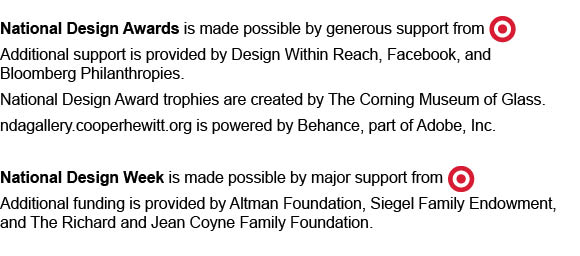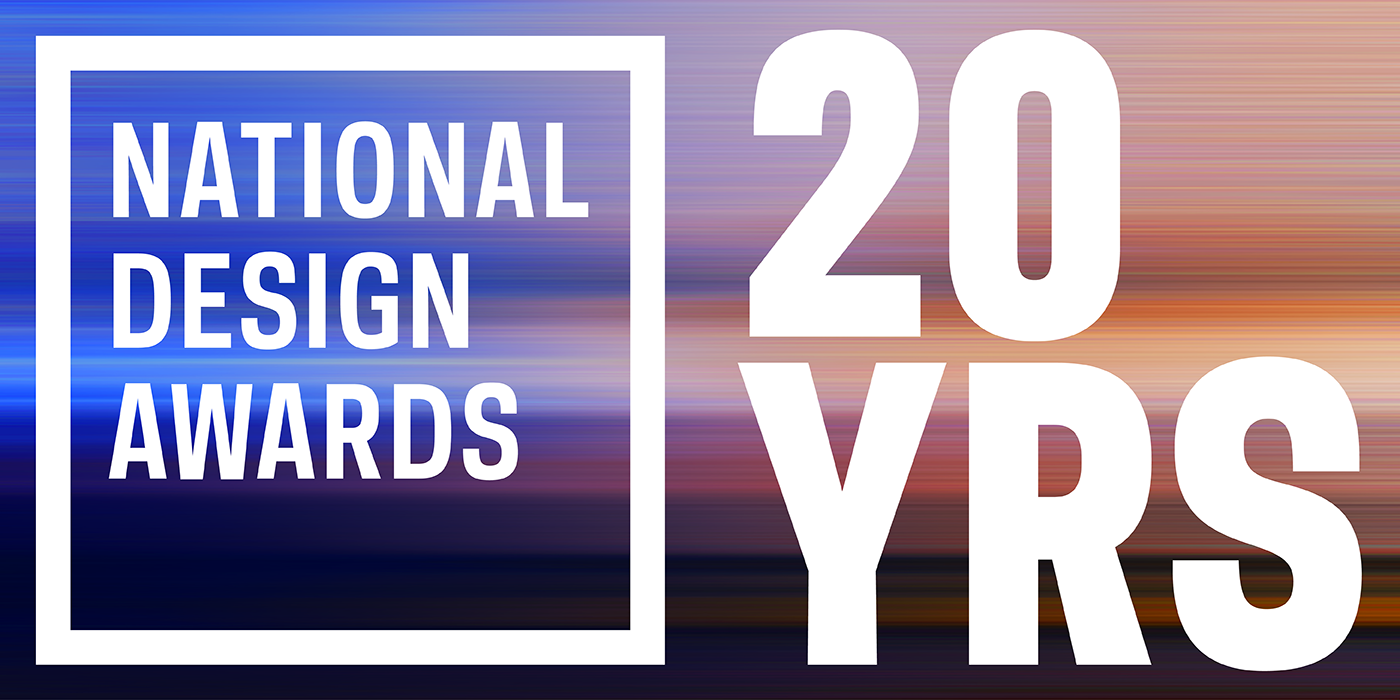IwamotoScott Architecture, winner of the 2019 National Design Award for Interior Design, is a San Francisco-based architecture and design firm founded by Lisa Iwamoto and Craig Scott in 2000. Committed to pursuing architecture as a form of applied design research, the firm believes that each project can achieve a unique design synthesis. Conceptual themes of the work focus on strategies of adaptation and intensifying the experiential and performance-based qualities of materials and space. The firm’s clients range from technology companies and arts organizations to venture capital firms and educational institutions including Pinterest, Google, Tishman Speyer, the Vitra Design Museum, MoMA/PS1, SFMOMA and University of California Berkeley. Alongside their practice, Iwamoto is professor in architecture at UC Berkeley, and Scott is professor in architecture at California College of the Arts.
The National Design Award recipients will be honored at a gala dinner and ceremony Thursday, Oct. 17, in the Arthur Ross Terrace and Garden at Cooper Hewitt.
What three adjectives define “good design” to you?
Synthesized. Perceptual. Effortless.
Who is a designer, historic or working today, that you would invite to a dinner party?
Álvaro Siza, Rem Koolhaas, Le Corbusier, Charles and Ray Eames, Florence Knoll… The list is endless.
How do you relax on your day off?
Taking our dog Fluffy on a hike or to the beach. Eating good food. Visiting new places. Spending time with family and friends.
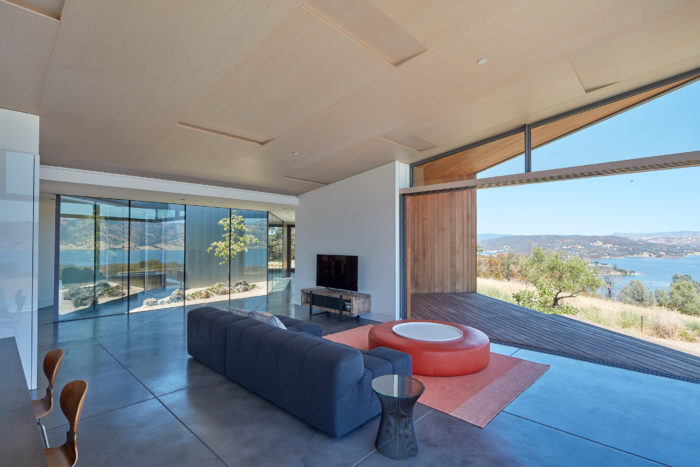
Goto House (Napa County, California, 2017). Photo: Bruce Damonte
Goto House sits at the edge of a meadow on a 95 acre off-grid Napa County parcel overlooking Lake Berryessa. The houses hexagonal form capitalizes on spectacular views in all directions of the surrounding landscape. The houses program is organized as four rectangular blocksLiving, Master Bedroom, Kids, and Yoga/Guestthat are configured around the houses central Rhombus shaped courtyard. Four covered decks between the program blocks create a strong connection to the landscape and an outward pull toward the lake and surrounding mountains, which plays against an inward spatial pull toward the courtyard and its connection to the sky.
What inspires you when you’re feeling stuck?
Other designers’ and architects’ great work. Finding compelling solutions in the everyday. Nature.
What do Cooper Hewitt and the National Design Awards mean to you?
Like many designers, we spend most of our time working—trying to resolve difficult problems in a beautiful way. It is both a frustrating and rewarding endeavor. Being recognized by Cooper Hewitt’s National Design Awards is so fulfilling, as it shows how that effort is acknowledged and appreciated by those who engage in the same process.
How did you get your start in design?
For Craig, it was quite direct. He designed and built a cabin on his dad’s ranch when he was 16. For Lisa, it was more roundabout. She started as an engineer, but finally felt at home when she started architecture grad school.
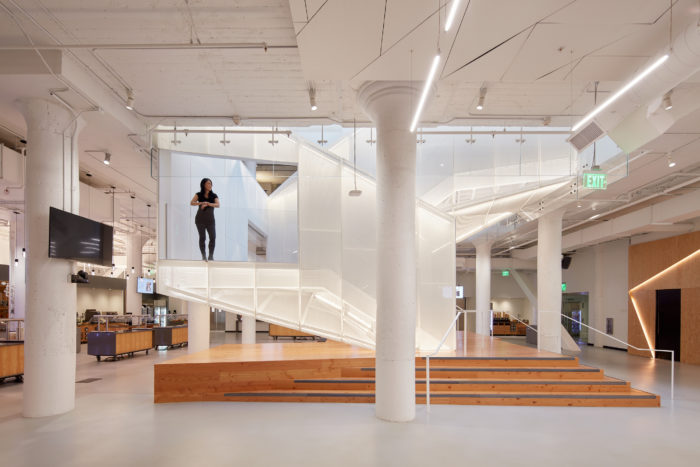
Pinterest Headquarters (San Francisco, California, 2016). Photo: Bruce Damonte
Pinterest, a rapidly expanding San Francisco tech company, commissioned IwamotoScott to take on its expansion with this 100,000 square foot headquarters, within a four-story concrete frame warehouse in SOMA. The main communal uses and public interfacing spaces on the ground floor wrap around a central atrium, transformed by inserting a new sculptural communication stair, named the Knitting Stair. The upper three levels configure a ring of workstations around the perimeter, around a porous ring of meeting rooms wrapping the central atrium and Knitting Stair.
How has mentorship influenced your career?
Because we both teach, we have great mentors from academia, and that bleeds into our practice and career. A mentor can be lifelong, but the momentary mentors—someone who says exactly the right thing at the right time—are just as valuable. In grad school, Rafael Moneo said, “Have courage.” Design takes courage, and we’ll never forget that.
Looking over your body of work, is there one design project that holds personal significance for you?
Many projects hold significance for us, each in a different way. Voussoir Cloud was the culmination of a body of research combining geometric patterns with origami-like folding of ultra-lightweight materials. We love Voussoir Cloud because it became inhabitable. Other projects hold significance because they were a first: our first free-standing house, the Goto House, and our first large workplace, Pinterest. Doing something for the first time is a magical combination of being able to finally realize ideas that have been brewing for a long time and learning a whole new way of designing and working.
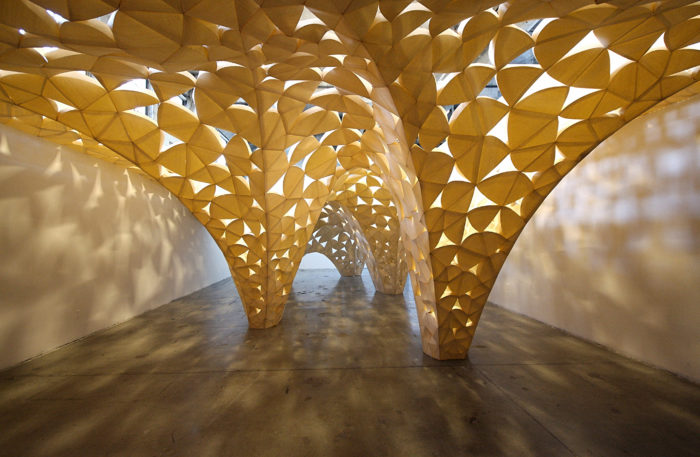
VoussoirCloud, SCIArc Gallery (Los Angeles, California, 2008). Photo: Judson Terry
IwamotoScott were invited to contribute to the ongoing series of experimental installations in the SCIArc Gallery. The project begins with the premise that the design should not simply sit in the gallery space as sculptural object but rather, it should offer a more immersive spatial experience design proceeds as an investigation into material and structural transmutationwhereby seemingly heavy, compressive wood blocks become light, translucent petals depending on the changing light of day.
How do you think design will change in the next 20 years?
Concentration on resiliency and community. Designers, in any discipline, are uniquely qualified to think across multiple scales.
What are your words of advice to the next generation of designers?
It’s a marathon, not a sprint. Take heart and plunge forward.
About the National Design Awards
Cooper Hewitt’s National Design Awards is the only annual program of its kind, bringing national recognition to the ways in which design enriches everyday life. Launched at the White House in 2000 as a project of the White House Millennium Council, the National Design Awards were established to promote design as a vital humanistic tool in shaping the world. Twenty years later, the National Design Awards continue to honor and support excellence, innovation, and lasting achievement in American design. Cooper Hewitt continues to broaden access nationwide to the vision and work of the country’s design leaders through National Design Week and NDA Cities, inspiring people of all ages to engage with design and design thinking.
In celebration of the 20th anniversary of the National Design Awards, Target will offer free admission to all visitors of Cooper Hewitt during National Design Week, Oct. 12–19, to make design accessible to all. Target will also sponsor a series of Cooper Hewitt programming broadening access to the vision and work of the country’s design leaders and inspiring people of all ages to engage with design and design thinking.
